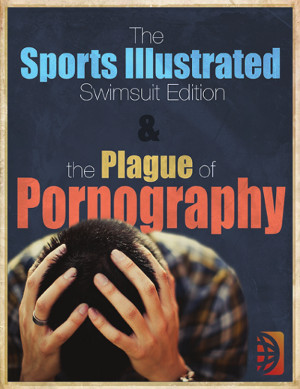
The 50th annual Sports Illustrated swimsuit issue is being released today. The idea of editor Andre Laguerre, it was created in 1964 to fill the winter months, typically a slower time in the sports calendar. Laguerre summoned a young fashion reporter named Jule Campbell to his office and asked her, “How would you like to go to some beautiful place and put a pretty girl on the cover?” Campbell made the swimsuit issue into a juggernaut.
Beginning in 1997, the swimsuit issue has featured only models, with no athletes. Since then, it has become one of its owner’s largest revenue producers; Forbes estimates that it has generated more than $1 billion. The swimsuit issue traditionally sells more than one million copies on newsstands, 10 to 15 times as much as a regular Sports Illustrated issue. It accounts for 11 percent of the magazine’s annual revenue. Subscribers have the option to refuse the swimsuit edition and get an extension on their subscription—less than one percent choose to do so.
What does the popularity of the swimsuit issue say about us?
Clearly, the magazine mirrors the cultural transformation of recent decades. One media expert says it “amplified cultural change that was going on anyway.” Another notes: “In the late ’70s and early 80’s, the whole area of sexual explicitness in magazines, film, and all that sort of stuff exploded. Magazines like Penthouse and Playboy were selling three and four million copies an issue.”
In that sense, the magazine is part of a trend that should frighten us all. I recently completed an in-depth study on the issue of pornography in our culture, and was shocked by what I discovered. Forty percent of adults in the U.S. regularly visit porn sites (including 69 percent of men ages 18 to 26); 42.7 percent of all Internet users view porn. About 30 percent of Internet porn consumers are women; 90 percent of children ages 8 to 16 have viewed porn online. Hollywood produces around 400 films a year; the adult film industry produces more than 11,000.
One expert calls pornography “more addictive than crack cocaine.” It is clearly a problem for Christians: 47 percent of believers and nearly 40 percent of pastors admit to struggling with the issue. My paper on the subject describes steps you can take to overcome this plague for yourself, your family, and our culture.
In The Mortification of Sin, John Owen observes: “Sin aims always at the utmost; every time it rises up to tempt or entice, if it has its own way it will go out to the utmost sin in that kind. Every unclean thought or glance would be adultery if it could, every thought of unbelief would be atheism if allowed to develop. Every rise of lust, if it has its way reaches the height of villainy; it is like the grave that is never satisfied. The deceitfulness of sin is seen in that it is modest in its first proposals but when it prevails it hardens men’s hearts, and brings them to ruin.”
It will never be easier to refuse temptation than it is right now. How is that fact relevant to your life today?











